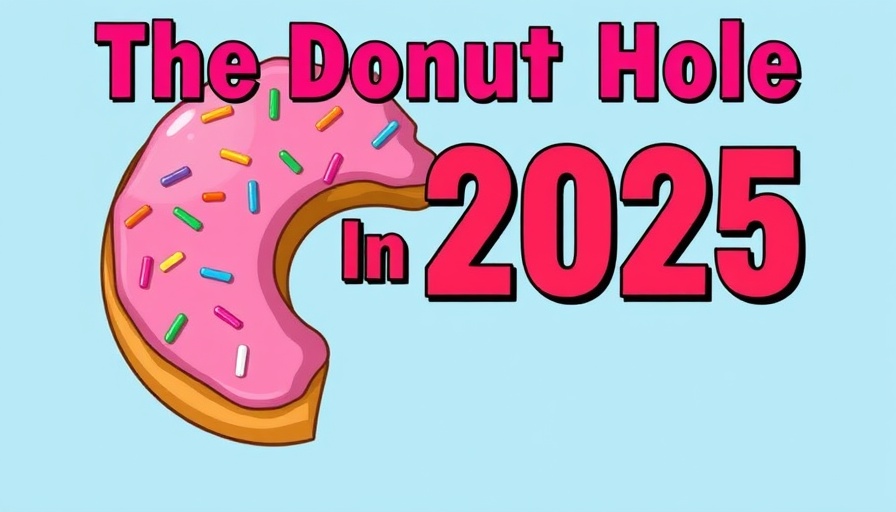
The End of the Medicare Part D Donut Hole: What It Means in 2025
The Medicare Part D system has undergone significant reforms, and understanding these changes is essential for beneficiaries navigating their healthcare options. As of 2025, the infamous "donut hole" is officially a thing of the past. This article aims to clarify how Medicare Part D works today and the implications for future enrollees, especially those managing chronic conditions or high medication costs.
From Coverage Gaps to Predictable Costs
The "donut hole" once created confusion and financial strain for many Medicare participants. Before 2020, beneficiaries encountered a coverage gap that resulted in escalating out-of-pocket expenses once drug spending reached a certain limit. In 2025, however, this gap has closed permanently. Beneficiaries now contribute only 25% of their drug costs during the initial coverage phase following their annual deductible. Such predictability in pricing empowers individuals to better plan their health budgets.
A Tiered Approach to Drug Coverage
Medicare Part D now utilizes a tiered structure of benefits designed to make prescription drug coverage more accessible. Initially, enrollees pay 100% of their medication costs until they meet a deductible of $590. After reaching this threshold, individuals enter an initial coverage phase where they again pay only 25% of the costs for their medications until their expenses total $8,000. Once beneficiaries surpass this mark, they qualify for catastrophic coverage, which means they pay $0 for covered medications for the rest of the year.
Embracing Changes from the Inflation Reduction Act
The Inflation Reduction Act of 2022 introduced pivotal reforms that take full effect in 2025, ushering in a new era of affordability in prescription drug coverage. One of the most significant changes is the annual out-of-pocket cost cap, set at $2,000. This means that even though beneficiaries may incur high costs, their financial burden is limited. By ensuring that once individuals reach their out-of-pocket limit they pay $0 for covered medications, the Act aims to combat medication non-adherence caused by cost barriers.
Monthly Payment Options: A Game Changer
Additionally, the introduction of new monthly payment options allows beneficiaries to manage high drug costs better by distributing payments over time rather than facing large out-of-pocket expenses upfront. This change is particularly beneficial for individuals managing multiple prescriptions or expensive therapies, as it promotes financial stability and adherence to medication regimens.
Qualifying for Catastrophic Coverage
Qualifying for catastrophic coverage under Medicare Part D is another critical aspect that beneficiaries need to understand. Achieving the TrOOP spending limit of $8,000 places an individual in what is referred to as catastrophic coverage, enabling them to receive necessary medications without any additional costs. Such provisions are poised to vastly improve the overall health outcomes of Medicare members, fostering a system where cost is no longer a barrier to accessing critical health resources.
Why Understanding These Changes Matters
The evolution of Medicare Part D is, at its heart, an effort to streamline the process of obtaining medications while mitigating the financial burden placed on seniors. Recognizing how these changes impact individual costs can significantly affect healthcare decisions, especially amid rising medication prices in the current economic landscape. For beneficiaries and caregivers, having clarity on these processes fosters empowered decision-making, leading to better health management.
A Call to Action: Stay Informed
If you’re a Medicare beneficiary or are assisting someone who is, it’s crucial to stay informed about these changes. Understanding how Medicare Part D works in 2025 can enhance your ability to make informed decisions regarding care options and financial planning. Remember, being proactive about your health and medication costs leads to better overall outcomes.
 Add Row
Add Row  Add
Add 



 Add Row
Add Row  Add
Add 
Write A Comment